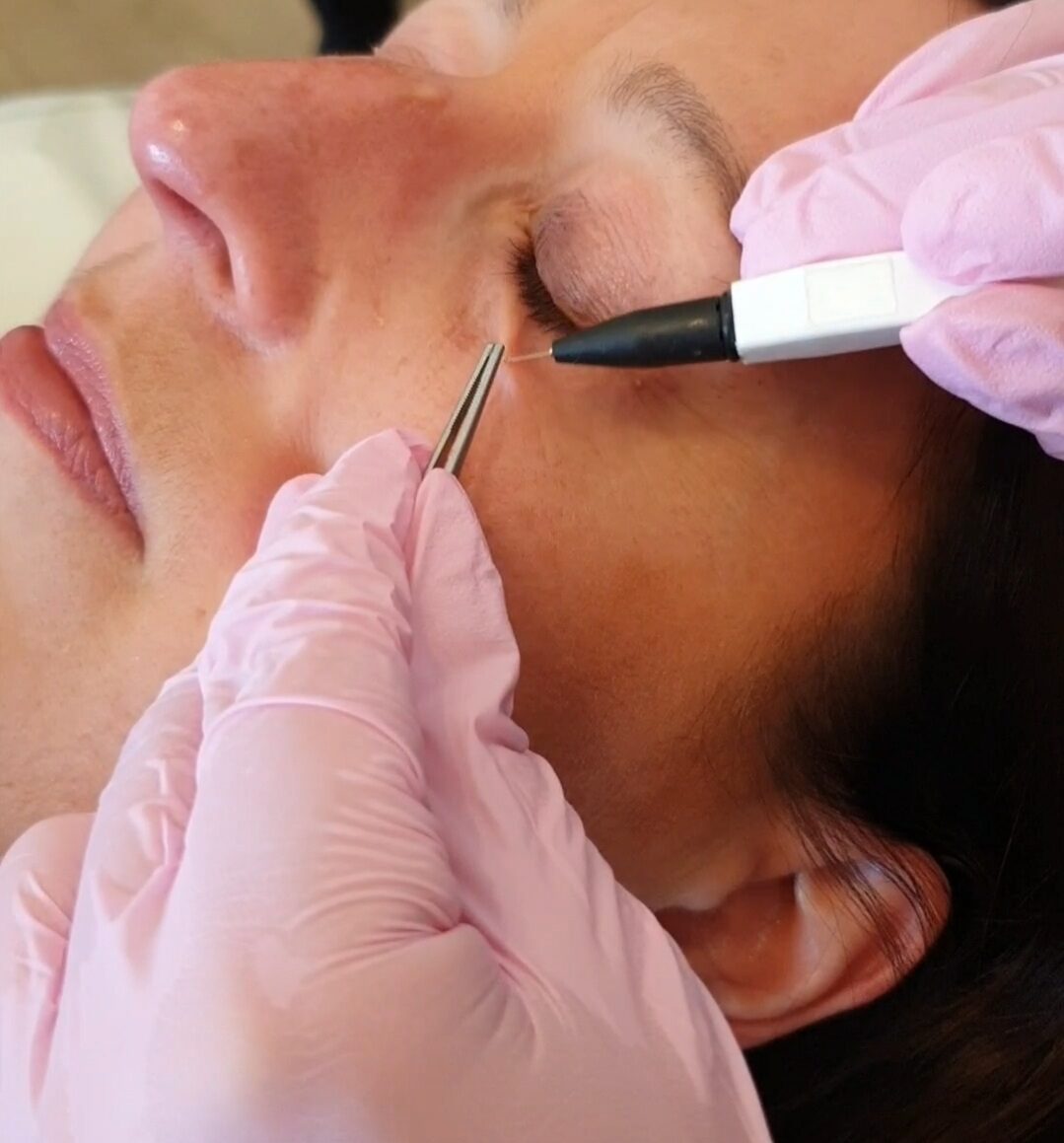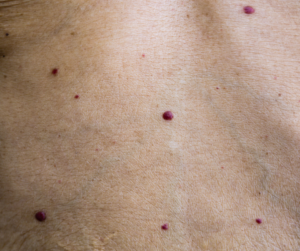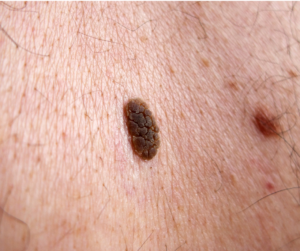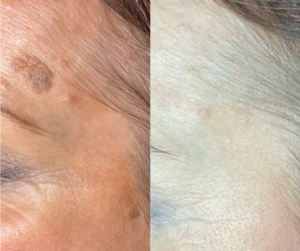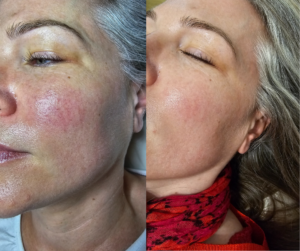At The Female Health Clinic, we use Electrosurgery to remove unwanted lesions from the face and body. It is very effective at removing minor skin blemishes that develop due to ageing, sun damage, or certain health conditions.
Electrosurgery works by using electrically induced heat via a fine probe to either lift away the lesion from the surface of the skin or cauterise it, so the lesion dries up and falls off.
Lumps, bumps, and lesions
Most people either have or will develop a lump, bump, or lesion at some point
in their lives. Fortunately, most of these lesions are likely to be harmless, but they can develop in places that make them uncomfortable or easy to snag. If they are somewhere visible, such as the face, they can make us feel self conscious about their appearance – and even affect our confidence.
If you have a new lump or bump, develop on or under the surface of your skin, or one that starts to change in appearance, always seek advice from your GP, dermatologist, or clinical practice.
Nowadays, if the lesion is harmless, it is usually considered a cosmetic concern,
and it is unlikely your GP will remove it for you.
Does Electrosurgery hurt?
Most of our patients describe the treatment as a warm stinging sensation. Some do find it mildly uncomfortable, but in general it is an easily tolerated procedure.
Most individual blemishes can be removed during a 15-minute appointment.
Multiple lesions (such as seborrhoeic keratosis) often need a longer appointment, and some patients choose to spread the treatment over a few sessions. Our practitioner will discuss this with you during the initial consultation.
What lesions can be removed with Electrosurgery?
Electrosurgery can remove a range of lumps, bumps, and lesions from the skin’s surface. These include:
- Skin tags
- Age spots
- Warts
- Milia
- Sebaceous cysts
- Campbell de Morgan spots (cherry spots)
- Facial thread veins
- Dermatosis papulose nigra
- Sebhorrhoeic keratosis (senile warts)
- Sebaceous hyperplasia
- Syringoma
- *Moles
*If you have any moles you are concerned about, we offer a mole check
service or recommend you have your own GP check them for you.
Skin tags
Skin tags are small, harmless growths that tend to develop in areas where skin repeatedly rubs against something. They can be caused by everyday items such as necklaces, glasses, clothing, underwear, or even a car seat belt.
Although they are typically harmless, they can grow in size if left untreated.
Skin tags are made up of loose collagen fibres and blood vessels surrounded by skin. One common method of removing skin tags is by tying a thread around the base of the tag, which reduces blood supply and causes it to fall off. However, this method may increase the risk of infection. Therefore, it is recommended to remove skin tags using Electrosurgery, a safe and effective procedure.
Campbell de Morgan spots (cherry spots)
These red dots or spots may appear on different parts of the body such as the torso, limbs, and face. However, there is no need to worry about them as they are just small blood vessels that have ruptured or burst under the skin.
Sometimes, they can grow larger in size, but most of the time they are relatively small and not easily noticeable. It is common for some people to be more prone to them, and the number and size of these spots tend to increase after the age of forty.
Women may first notice these spots on their skin post-pregnancy or during perimenopause.
Seborrhoeic keratosis
These lesions are exceptionally common. They are also known as seborrhoeic warts, basal cell papillomas, or senile warts. They are harmless growths on the skin caused by an excess build-up of the ordinary skin cells.
If you are forty years or older, chances are you have one or will develop one. It is not unusual for them to form all over the body with the torso and face more commonly affected. It is not uncommon to find multiple lesions and some patients have very large numbers.
Seborrhoeic keratosis before and after
Milia
Milia form under a thin layer of skin. They are harmless, tiny little cysts that form when dead skin cells get trapped under the skin. They are commonly found on the eyelids, forehead, and cheeks.
It is so important not to try and ‘pop’ them! There is no opening and popping them will most likely damage the delicate skin and cause scarring.
Electrosurgery will safely break down the milia from within, meaning it will disappear without causing damage to the skin.
Facial thread veins
Facial veins are broken capillaries and commonly referred to as thread veins or spider veins. They are nothing to worry about, but they can age the appearance of the skin and make it look ruddy and unhealthy.
Some of the common causes of facial thread veins are:
- Too much sun or wind exposure
- Pregnancy
- Rosacea
- Trauma to the skin
- Excessive alcohol
They are easy to treat with Electrosurgery, which works by gently cauterising the vessel, causing it to dry up and magically disappear.
Dermatosis papulosa nigra
Dermatosis papulosa nigra is a harmless skin condition that affects people with darker skin – typically with a Fitzpatrick skin type III to VI and most commonly people of Asian or African descent.
They are very similar to seborrhoeic keratosis (see above) but different in that they tend to develop more on the face and neck and not so much on the body. They can first appear during the teenage years and gradually become more pronounced.
It is a common condition and thought to affect about one-third of adults.
Age Spots
Age spots, also known as liver spots, senile lentigo, sunspots or solar lentigines, are small, flat dark areas that appear on the skin. These spots tend to develop in middle age and are most likely to appear on those who spend a lot of time in the sun.
Age spots are caused by prolonged exposure to the sun and tend to appear on the areas of skin that are most exposed, such as the hands, face, arms, back, and shoulders.
Electrosurgery uses a fine needle and current to target the age spots, gently lifting them away from the surface of the skin.
What else can be removed with Electrosurgery?
Other lesions that we remove with Electrosurgery are:
- Warts
- Sebaceous hyperplasia
- Syringoma
- *Moles
*If you have any moles you are concerned about, we offer a mole check service with our GP or recommend you have your GP check them for you.
In general, always seek professional medical advice if you have a lesion or skin blemish that changes in size, colour, or shape, and also if you develop any new lesions on or underneath the surface of the skin.
How do I arrange a consultation or book an appointment?
You can email info@thefemalehealthclinic.co.uk or telephone 01252 915333
